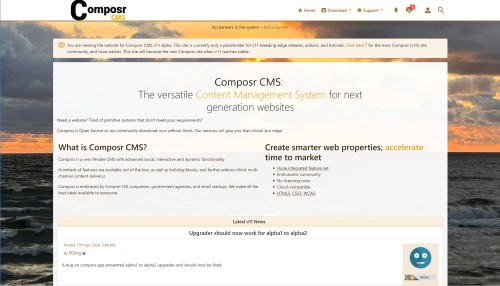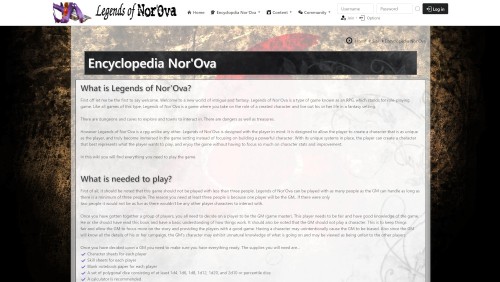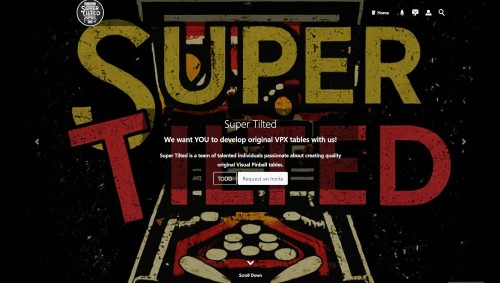Featured Sites: A-Z Index
H
Newest 10 Entries
| Question | How do I set the correct file permissions for Composr? |
|---|---|
| Answer | If you're using the quick installer, it will handle file permissions automatically. On a suEXEC-style server, default permissions (744 for directories and 644 for files) are usually sufficient. However, _config.php should have 600 permissions for security. Without suEXEC, specific directories (e.g., caches, uploads) and files (e.g., _config.php) require 777 (full access) or 666 (read/write) permissions. The fixperms.php script can automate this process on Linux and Windows. |
| Question | How do I install Composr on Linux? |
|---|---|
| Answer | After ensuring your web host meets the requirements and you have a database ready, you can install Composr on Linux using the following steps:
|
| Question | What are the prerequisites for installing Composr? |
|---|---|
| Answer | Before installing Composr, ensure your web host meets the minimum requirements. Familiarize yourself with your web host's control panel (e.g., Plesk, cPanel), which you'll use to manage databases, subdomains, and other settings. Gather your SFTP/FTP credentials (hostname, username, password), usually emailed upon signup. Set up a MySQL database and note its details: hostname (often 'localhost'), username, password, and database name. Ensure the database user has full read/write/administer access to the database. |
| Question | What tools are available for debugging Composr code? |
|---|---|
| Answer | Composr offers a code quality checker addon that helps identify various types of errors, including parser errors, run-time errors, and logical errors. This tool can significantly reduce debugging time and enhance code reliability. It is available through the testing_platform addon. |
| Question | What are some key coding standards in Composr? |
|---|---|
| Answer | Composr emphasizes clean, well-structured code with a focus on readability and maintainability. Key standards include proper indentation, consistent use of comments, and clear function headers with type definitions. Remember: beautiful code leads to better functionality and collaboration! |
| Question | Where can I find resources for learning PHP programming? |
|---|---|
| Answer | While Composr documentation doesn't cover basic PHP, resources like the official PHP documentation ( |
| Question | What is the purpose of the Code Editor? |
|---|---|
| Answer | The Code Editor is a web-based tool for editing Composr code files directly on the server. It requires password authentication and automatically manages overrides within _custom directories. To access it, go to yourbaseurl/code_editor.php. |
| Question | How can I export and import custom addons? |
|---|---|
| Answer | Composr allows exporting addons as TAR files, containing all necessary files and an addon.inf file for metadata. You can import these addons to share and reuse them across different Composr installations. To do this, make your necessary files for the addon in the Composr installation, and then go under Admin Zone > Structure > Addons > Export addon. You can select the relevant files for the addon, provide information about the addon, and then download the TAR file (which can then be imported on other Composr sites). |
| Question | Can you give an example of creating a new module? |
|---|---|
| Answer | Imagine creating a "Testing" module to manage collaborative testing:
|
| Question | What are the different ways to extend Composr functionality? |
|---|---|
| Answer | You can extend Composr through:
|
Top 10 Entries
| Title | Installation |
|---|---|
| Icon |  |
| Description | Quick installer: Our self-extractor allows faster uploads and will automatically set permissions. Wizard-based installation Auto-scans for compatibility problems: Be informed of problems before installing Get your site up and running in just a few minutes Keep your site closed to regular visitors until you're happy to open it Configures server: Automatically generates an htaccess file for you (for Apache). Auto-detection of forum settings for easy integration Install test content |
| Title | Web Pages |
|---|---|
| Icon |  |
| Description | Add virtually unlimited pages to your site WYSIWYG editor (powered by CKEditor) Convenient edit links: Staff see “edit this” links at the bottom of every page. PHP support: Upload your PHP scripts and run them inside Composr (may require adjustments to the script code). Hierarchical page structure: Supports parent and child pages Periodic content reviews: Helping you ensure ongoing accuracy of your content. Add Comcode pages (the default) or static HTML pages Supports revisions and revision control systems (such as git); add new pages as files, and Composr will automatically register them in its system. |
| Title | Downloads |
|---|---|
| Icon |  |
| Description | Clear organisation: Uses a tree structure for unlimited categorisation. Anti-leech protection: download links contain a session ID Community-centred: Allow users to comment upon and rate downloads Many ways to add new files: Upload files. Link-to existing files. Copy existing files using a live URL. Batch import links from existing file stores. Author support: Assign your downloads to authors, so users can find other downloads by the same author. Set licences: Make users agree to a licence before downloading. Images: Show images along with your downloads (e.g. screen-shots) (this implicitly uses galleries). Basic file versioning support Control monthly bandwidth use site-wide |
| Title | Wiki+ |
|---|---|
| Icon |  |
| Description | Think “structured wikis”. Create an encyclopaedic database for your website Use a tree-structure or traditional cross-linking Supports revisions: Track changes Display the tree structure of your entire Wiki+ Allow users to jump in at random pages Make your pages either wiki-style or topic-style Allow members to contribute to Wiki+ pages by adding Wiki+ posts |
| Title | Quizzes and Surveys |
|---|---|
| Icon |  |
| Description | Run a competition: Choose winners randomly from those who passed the quiz. Surveys: Gather data and find trends. Tests: Test members' knowledge on a variety of topics. Cheat prevention: Settings to prevent cheating, such as time limits, question / answer shuffling, and re-testing rules. Integration with points: Charge points to enter a competition, or award points for winning. |
| Title | News and Blogs |
|---|---|
| Icon |  |
| Description | Member blogs: Allow members to have their own blogs on their profile RSS and Atom support: Export and import feeds. Trackback support: Send and receive trackbacks. Scheduled publishing Ping support and RSS Cloud support Multiple news categories and filtering Multiple ways to integrate news into your website Import from RSS feeds Supports geotargeting Members can rate and comment on news articles and blog posts Send out a news article as a newsletter |
| Title | Calendar |
|---|---|
| Icon |  |
| Description | Day/week/month/year views Advanced “recurring event” settings Event subscriptions: Receive reminders and notifications by event or event type Warnings about conflicting events Microformats support Integrate a calendar month view, or an upcoming events view, onto your design Supports categories: Have multiple event types Multiple time zones: Have different events in different time zones with configurable conversion settings. Priority flagging: Choose between 5 priorities Programmers can even use the calendar to schedule custom tasks (Commandr) to be run RSS and Atom support: Export support, but also support for overlaying news feeds onto the calendar. Supports geotargeting Feedback: Allow members to comment and rate events. Segregate feedback on recurring events by date. |
| Title | Galleries |
|---|---|
| Icon |  |
| Description | Multimedia: Supports images, videos, audio, and more. Personal galleries: Allow your members to create their own galleries which show up on their profile. Support for embedding YouTube videos: Save on bandwidth. Auto-detection of video length and resolution (most file formats) Full tree-structure support: Have galleries within galleries within galleries. Multiple display modes View entries as a slideshow Automatic thumbnail generation Mass import: Also supports importing metadata Optional watermarking: To guard against thieving swines
Geotargeting Adjustments: Automatic size and orientation adjustments according to metadata. |
| Title | Catalogues |
|---|---|
| Icon |  |
| Description | Think “databases on my website”. Flexible data control: Set up multiple catalogues, each with its own set of fields. There are many types of fields, such as short text fields, upload fields, and date fields. Multiple display modes: Display the contents of categories using tables, boxes, or lists. Powerful structure: Each catalogue contains categories which contain entries. Catalogues can have a tree structure of categories and/or work from an index. Configurable searching: Choose which fields are shown on categories, and which can be used to perform searches (template searches). Compliance with data protection legislation: Specify which fields may contain sensitive data. These fields will be anonymised as appropriate when members download or purge their data. Entirely customisable: Full support for customising catalogues, categories, and entries, exactly as you want them- field by field. You can even make custom page templates per-catalogue. Classified ads: Entries can automatically expire and get archived. You can also send out view reports. Community interaction: You can allow users to comment upon and rate entries. Import data from CSV files Periodic content reviews: Helping you ensure ongoing accuracy of your data. |
| Name | Patrick Schmalstig |
|---|---|
| Photograph |  |
| Title / Role | Lead Developer |
| Contributions / Notes | Joined Chris Graham behind the scenes in the development of Composr CMS in 2016. Took on the lead developer role in 2023 when Chris Graham stepped back to attend to his new lifestyle changes. Spearheaded the development of Composr CMS v11 and the new website, Composr.app. Formed the company PDStig, LLC to take on professional support and development for Composr CMS users especially after the discontinuation of ocProducts, Ltd. |
| Links |








